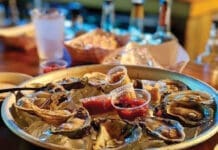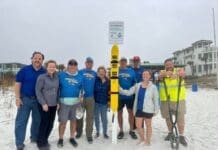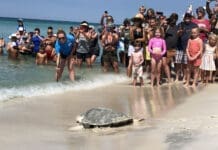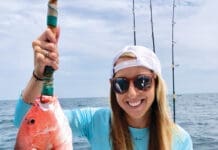By Joe Moore, founder, 30A Sealife Discovery Center and Appleseed Expeditions
Hello, my name is Joe Moore. I hold a master’s degree in Fishery Science from the University of West Florida and have extensive experience teaching marine biology in Hawaii, the Galapagos, California, and Florida. As the founder of the 30A Sealife Discovery Center and Appleseed Expeditions, as well as a Walton County resident, I’d like to share my perspective on the recent shark attacks along 30A in the Florida Panhandle.
I recently conducted an aerial survey using my paraglider over the region where the incidents occurred to investigate potential threats or anomalies in the ocean waters. Here are my findings:
Factors Contributing to Shark Presence
June Grass Proliferation: I observed extensive June grass along the shoreline. This phenomenon attracts baitfish, sea turtles, and other marine wildlife closer to the shore, creating a rich feeding ground for predators.
Abundance of Bait Fish: I noted an unusually high number of baitfish near the shore and around artificial reefs. This dense population of prey attracts small sharks, likely blacktip and sandbar sharks, which I identified from the air due to their sleek bodies and pointy snouts.
Early Arrival of Tarpon: Typically, tarpon migrate north in May and June, peaking in August and September. However, this year, they arrived early and in larger numbers, feeding on baitfish near the shore.
Goliath Groupers and Devil Rays: I spotted large goliath groupers under the piers and numerous devil rays feeding on plankton. The presence of these rays indicates a significant amount of plankton in the water, further enriching the food web.
Loggerhead Sea Turtles: I observed many large loggerhead sea turtles offshore. June marks the peak nesting season for these gentle giants. Large sharks often wait in shallow waters to ambush these turtles, making the waters near shore more succeptible to shark interaction.
Shark Behavior and Human Interaction
The combination of abundant baitfish, plankton, and sea turtles has drawn more sharks, including potentially dangerous bull sharks, closer to shore. The increase in marine activity has also coincided with a peak tourist season, increasing the chances of shark encounters.
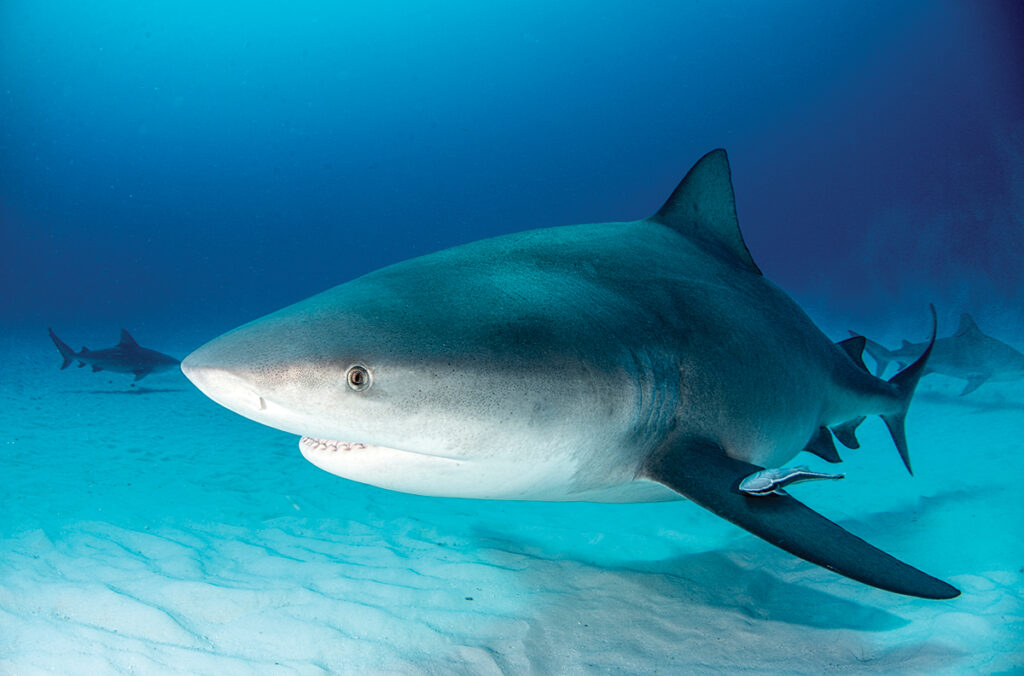
Safety Tips for Enjoying the Emerald Coast
To ensure a safe and enjoyable experience at the beach, here are some important precautions:
Swim in Groups: Sharks are less likely to approach groups of people.
Avoid Dawn and Dusk: These are peak feeding times for sharks. Stay out of the water during these times.
Stay Out of Murky Waters: Sharks may bite out of curiosity when visibility is low. Our waters along the Emerald Coast are usually clear, so avoid swimming when the water is churned up.
Avoid Night Swimming: Sharks are more active at night.
Stay Clear of Fishing Areas: Avoid swimming where bait is present in the water, as this attracts sharks.
By following these guidelines, you can greatly reduce the risk of a shark encounter and enjoy the beauty of our white sandy beaches safely.
Enhancing Marine Science Education
As the founder of the 30A Sealife Discovery Center and Appleseed Expeditions, I am dedicated to educating students about marine science. We offer school marine science trips and school trips focused on studying sharks and other marine life. These programs provide hands-on learning experiences, fostering a deeper understanding and appreciation of our oceans.
If you are interested in learning more about marine biology, shark behavior and ocean conservation, consider joining one of our educational trips. Together, we can enhance our knowledge and contribute to the preservation of our precious marine ecosystems.
Stay safe, enjoy the beach, and remember to respect the ocean and its inhabitants.
For more information, visit appleseedexpeditions.com or on Facebook at Appleseed Expeditions.






